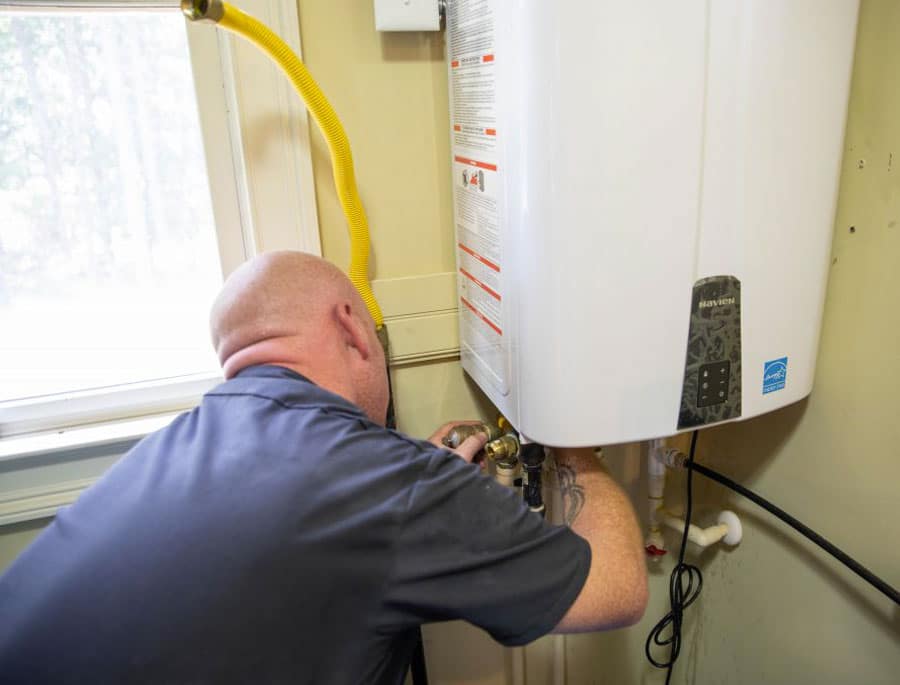How does a tankless water heater work?
The question of how does a tankless water heater work comes up a lot, as these systems are much newer than the traditional and better-understood tank water heaters that were used for many years previously. With an ingenious design, these new hot water heater systems heat water instantly and only as needed, so it can be more difficult for someone to imagine how this works. So, if you’re interested in learning how tankless water heaters work, follow along. Here’s a quick rundown that just about anyone can understand.
How Traditional Water Heaters Work
Many people understand the basic functionality methods of traditional water heaters, so they aren’t nearly as mystifying. These units hold a large capacity of water and regularly heat that water so that it’s ready whenever it’s needed. The entire body of water in these models is continuously heated, and accordingly, much more energy is needed to heat that large vessel full of water. The traditional water heater itself is also a much larger and bulkier item to have around the house. This is a far cry from how today’s much more energy-efficient tankless water heaters work.
A Look Inside Tankless Water Heaters
Tankless water heaters only heat the water that is flowing through them and instantly do so. With these, there is no need to continuously heat a large tank full of water. So, how exactly does it work?
When you turn on the hot side of a faucet in your home, water flows to that faucet from the tankless water heater. As it flows through that tankless model, it does so by way of a pipe that is wound around a heat exchanger inside the water heater. A heat exchanger is a central heating core of sorts that is instantly heated by either electricity or gas means and instantly transfers its own high volume of heat to that pipe full of water that is wrapped tightly around it and leading out to wherever the water is flowing to.
The mechanism that tells the tankless water heater whether it should be heating or not is called a flow sensor. The flow sensor essentially senses if water is moving through the pipe leading into and out of the water heater. It then tells the system to instantly turn on or off accordingly.
Aside from the heat exchanger, the internal piping, and flow sensors attached to that piping, there are a few other components that also contribute to this highly-efficient design in tankless water heaters today. The circuit board is one of these, and it acts as the system’s brain, monitoring and regulating all activity for safety and efficient function. Another component is the burner box where the fuel source is utilized to make heat for transfer to the heat exchanger. Yet another part of tankless water heaters is the fan. The fan helps to transfer heat directly to the heat exchanger from the fuel source creating that heat.
When you take a look inside, the question of how does a tankless water heater work, really does become less mystical and more understandable. Here at E Dennis, we are glad to help our customers understand exactly how these and all other plumbing systems work because when you benefit, we do too. If you need expert plumbing installation services for tankless water heaters, repair services, or just a consultation you can learn from and trust, we’re here when you need us. Working for you, as always, seven days a week, we are your number-one Atlanta area plumbing company.




